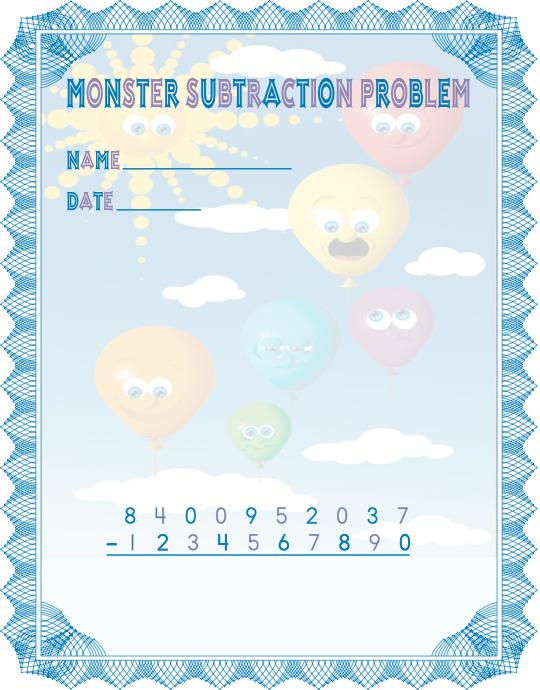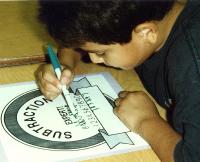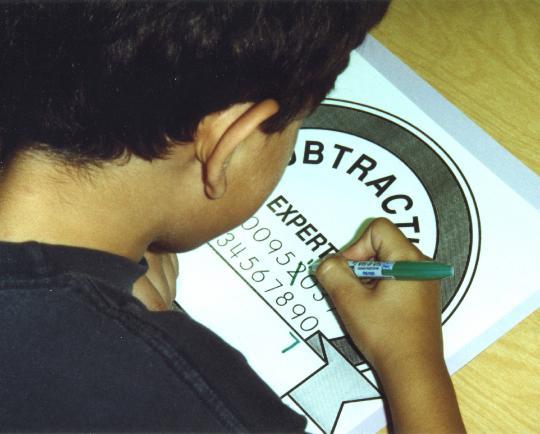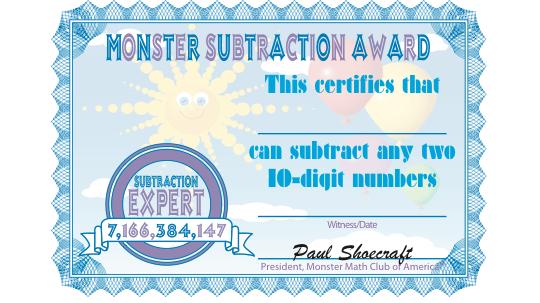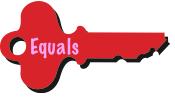 |
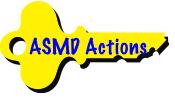 |
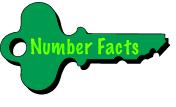 |
 |
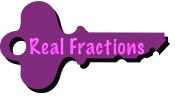 |
||||||||||
the elementary grades that make sense to adults but not to children. This results in many children “not getting it,” which leads to the other reason: what publishers do when teachers tell them that their textbooks are “too hard” for their students. What they do is give their customers—the teachers—what they want: a dumbed-down curriculum that circles back through arithmetic each year instead of spiraling upward (in spite of publishers’ claims to the contrary).
Arithmetic is shockingly dumbed down in the early grades. All that changes for addition and subtraction of whole numbers from year to year until grade 4 is the size of the numbers——no matter the publisher. Equally bad, no multiplication and division until the very end of grade 3, if even then, no matter the publisher. No surprise, then, that so many of our students struggle with arithmetic. To learn it well, they need to be taught it beginning in kindergarten in ways that communicate to them, not be held back until grade 4 just diddling with adding and subtracting small numbers.
Learn New Songs
If you think of teaching as singing and the standard elementary school math curriculum as songs, most elementary school teachers are great singers, but the songs they have been given to sing do not connect with their audience. The songs are like opera for a crowd in Nashville: stodgy and in a foreign language. ALL KIDS CAN LEARN ARITHMETIC is new songs. Some of them, like those for Fair Lands™, are unfamiliar to teachers but are songs children learn easily and come to love. Sing them to your children and you will be amazed at how well they will sing them along with you.
Math is Like a Long Staircase
Think of the topics in elementary school math as stairs on a staircase. Subtraction of whole numbers would be on the second step, one up from addition of whole numbers. Other steps would be, could be, and should be …
multiplication, division, fractions, decimals, percent, time, money, measurement (foot, quart, pound), metrics (meter, liter, gram), area, perimeter, square roots, Pythagorean Theorem (with geoboards), geometry of the circle (with circular geoboards), symmetry (mirror, rotational, slide), similarity, congruence, ratios, proportions, indirect measurement, trigonometry (sine, cosine, tangent), integers (with 2-colored counters), solving equations (with math balances), adding, subtracting, multiplying, and dividing polynomials (with algebra tiles), relations, functions, probability, combinations, permutations, statistics, ....
That is a lot of steps, yet as noted earlier, about a third of the grade 6 students tested could not work 5020 – 463, which means that after having gone to school for most of their childhood, a third of them had not even gotten to the second step of the staircase. That is horrible!
Maybe the 6th graders in your school would do better. Maybe only a fourth or fifth of them would not get the correct answer. Still, how much fear and heartbreak do figures like that represent for the students and their families, and how much math did these students not learn because they got stuck at the bottom of the staircase? The importance of the question should be acknowledged, but there is no value in trying to answer it. The value is in preempting the question by teaching every child how to subtract. In ALL KIDS CAN LEARN ARITHMETIC, this occurs in grade 2 at the latest when every child verifies that they know how to subtract by working the to get their .
Algorithms Are Goals, Not Keys
So much has been written about algorithms for this key that you may be wondering why the Algorithm Center is not listed along with the keys on the Home page. Algorithms are goals, not keys, and just as you cannot start out on a journey where you would like to be, you cannot with the algorithms if you are to teach them effectively. You have to start at the beginning of the journey and pass through each stop along the way, and for the algorithms, the stops up to here are the Equals key, the ASMD Actions key, the Number Facts key, and this key— the Fair Lands™ key.
Do NOT Multiply or Divide in Two Land (base 2) and Three Land (base 3)
To multiply and divide whole numbers, students must know or be able to figure out the multiplication and division facts. For multiplication, they must also know how to add,
CONTINUED: Next > | 1 | 2 | 3 | 4 | 5 | 6 | 7 | 8 | 9 | 10 | 11 | 12 | 13 | 14 | < Back
